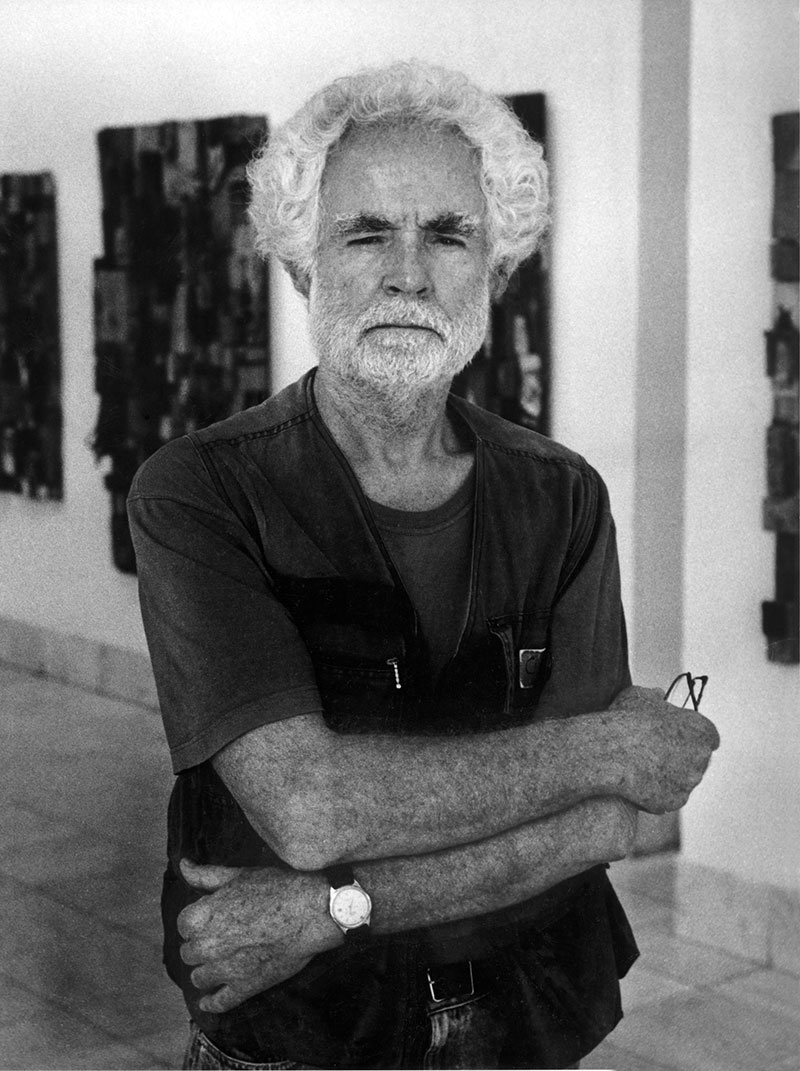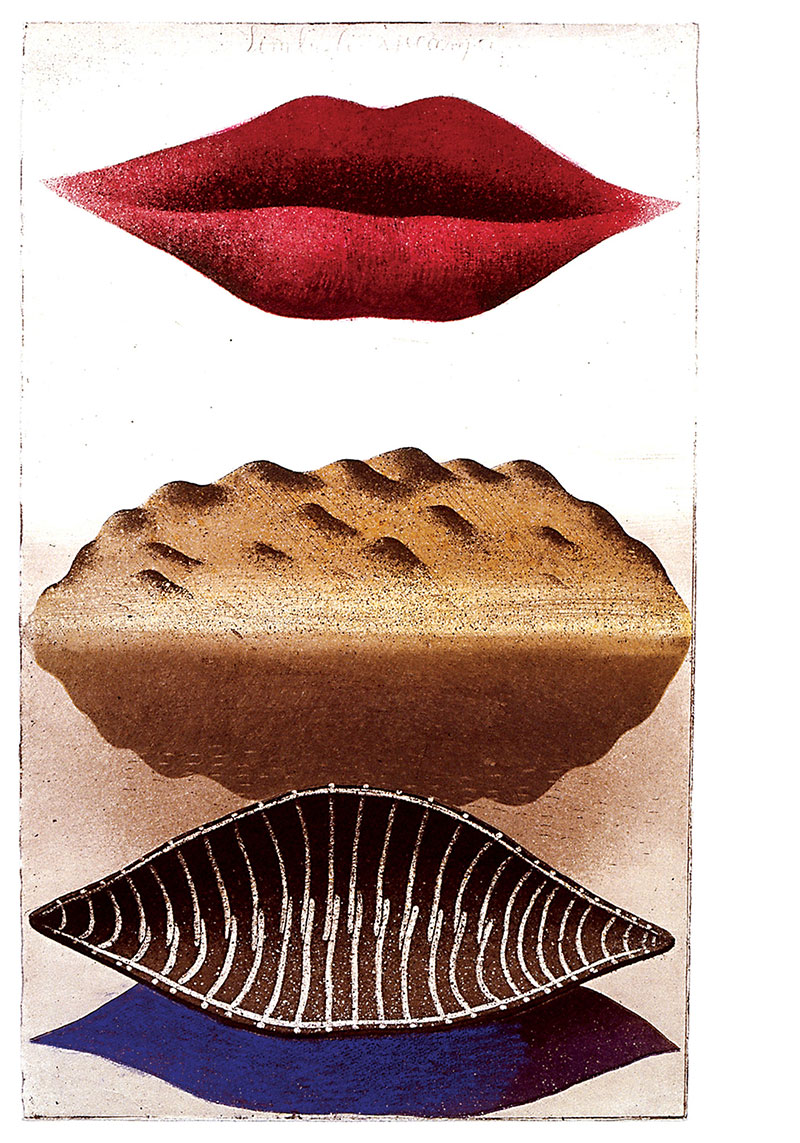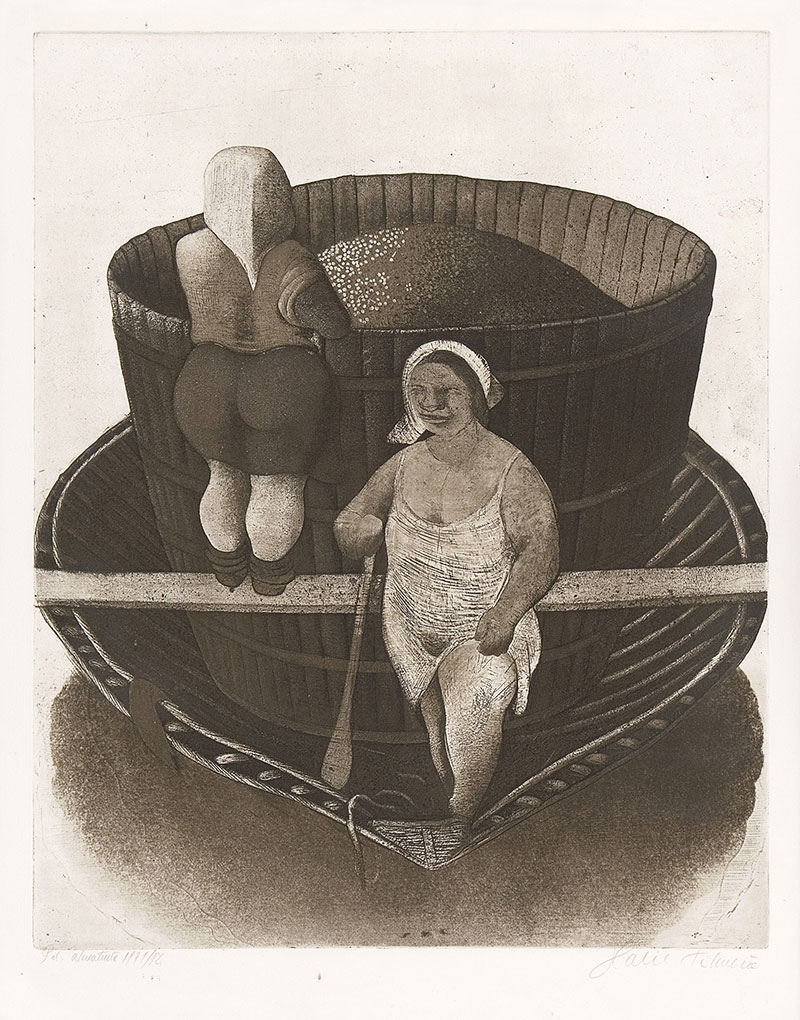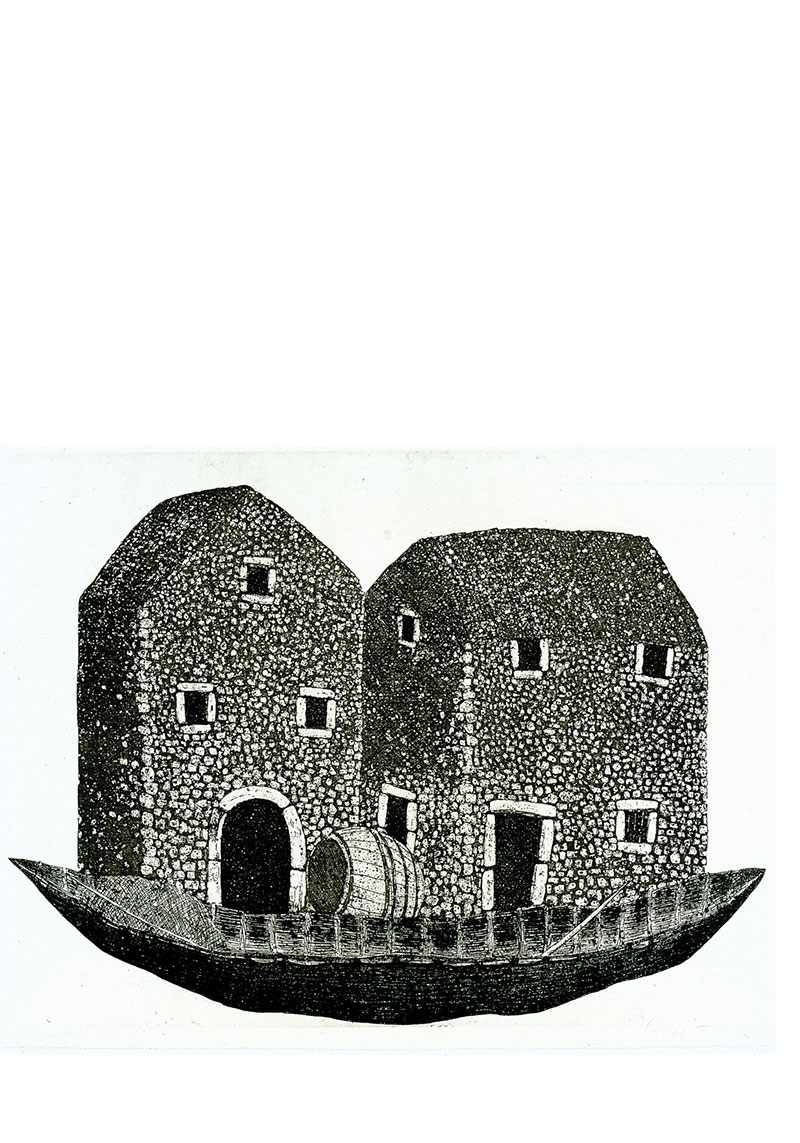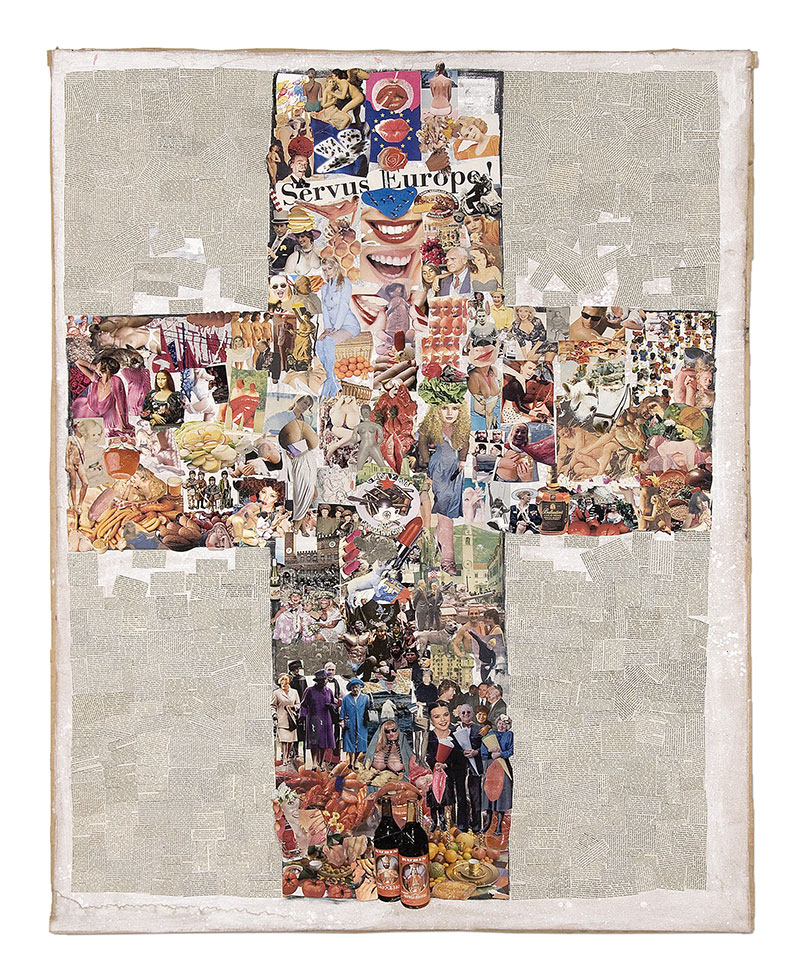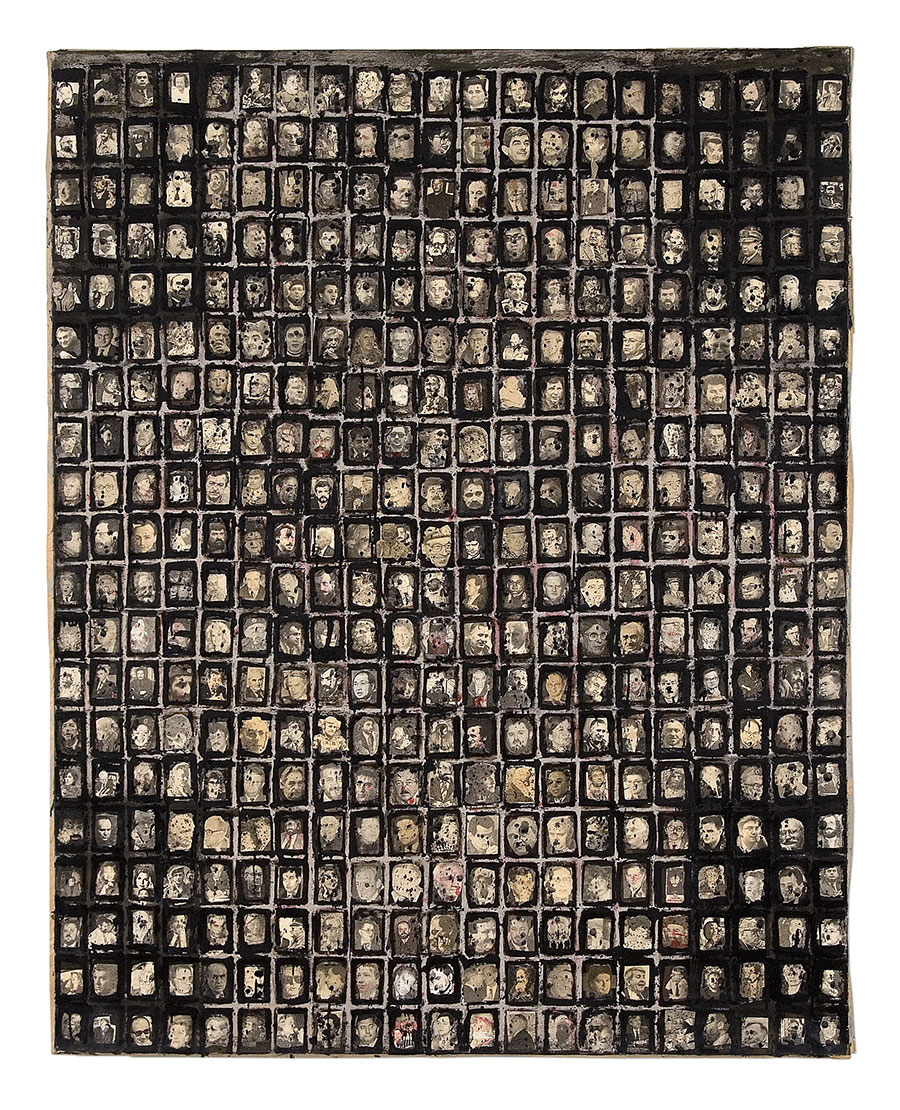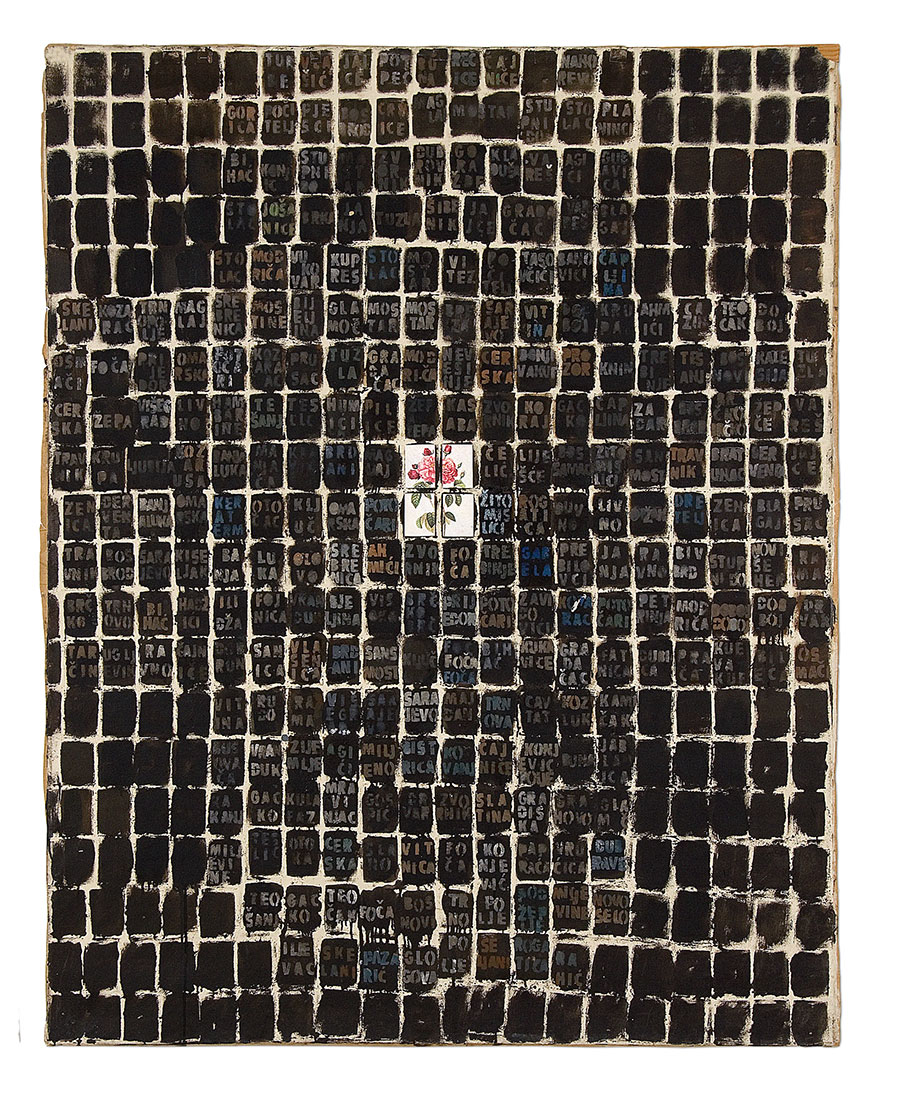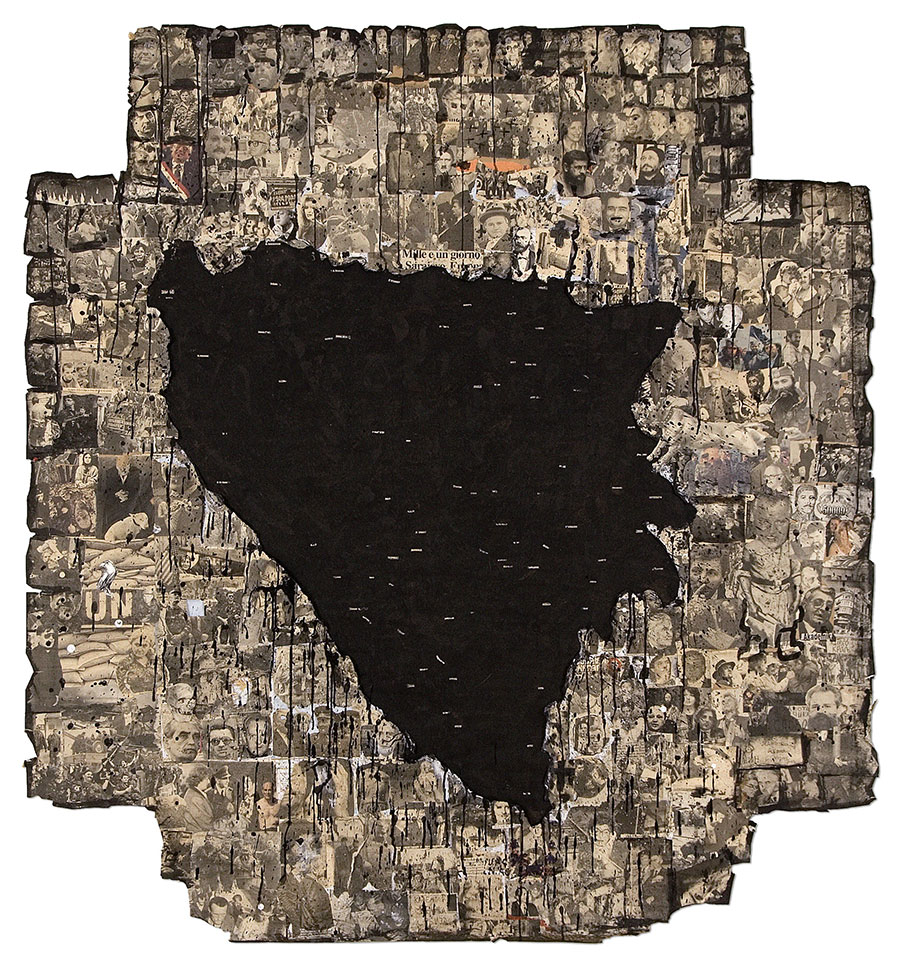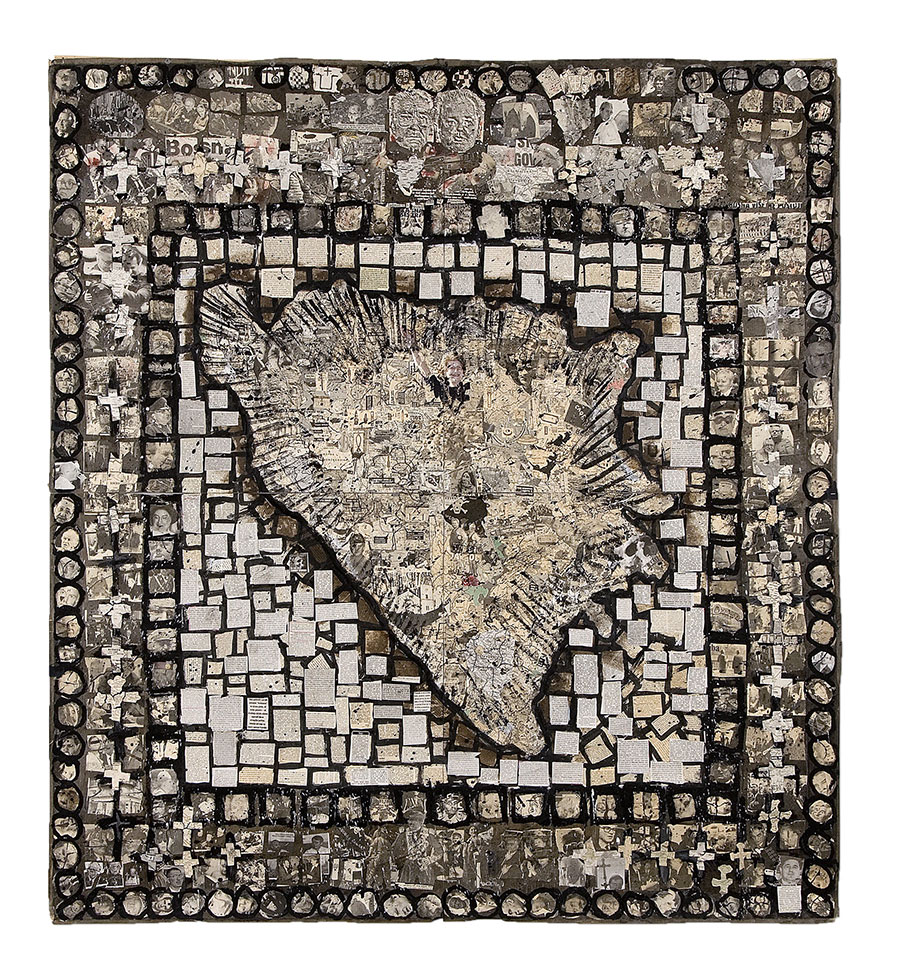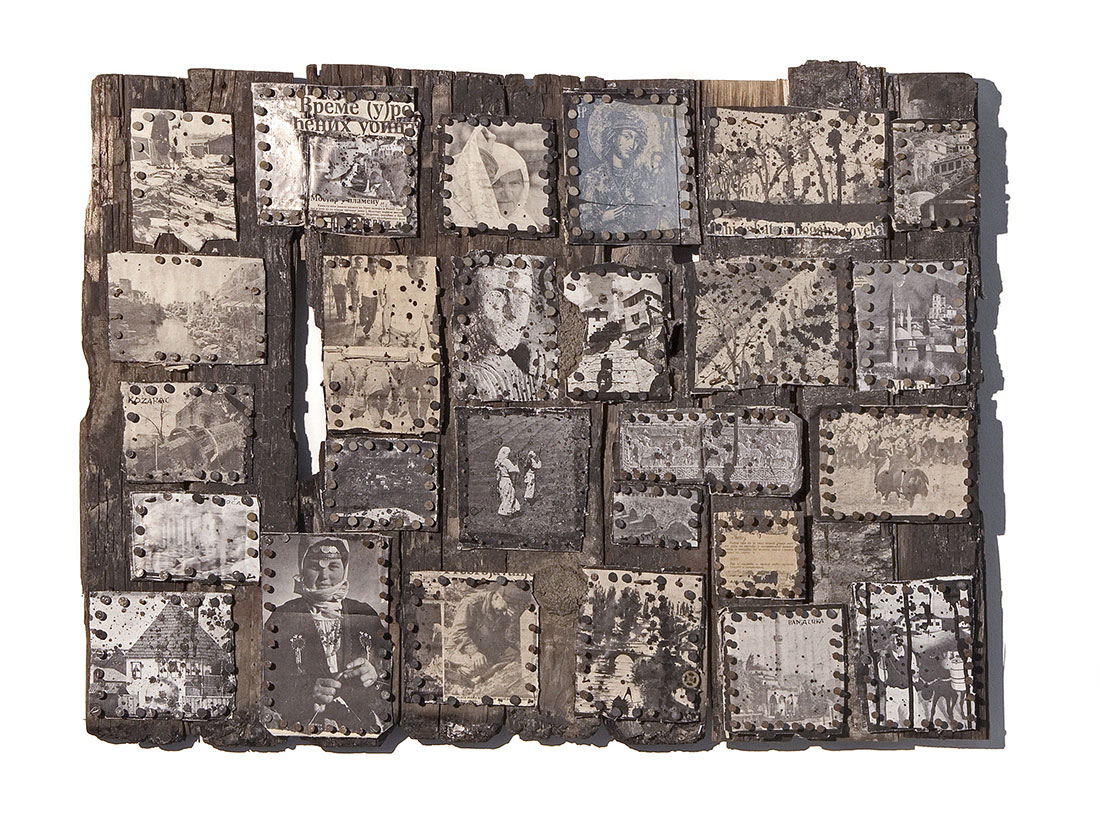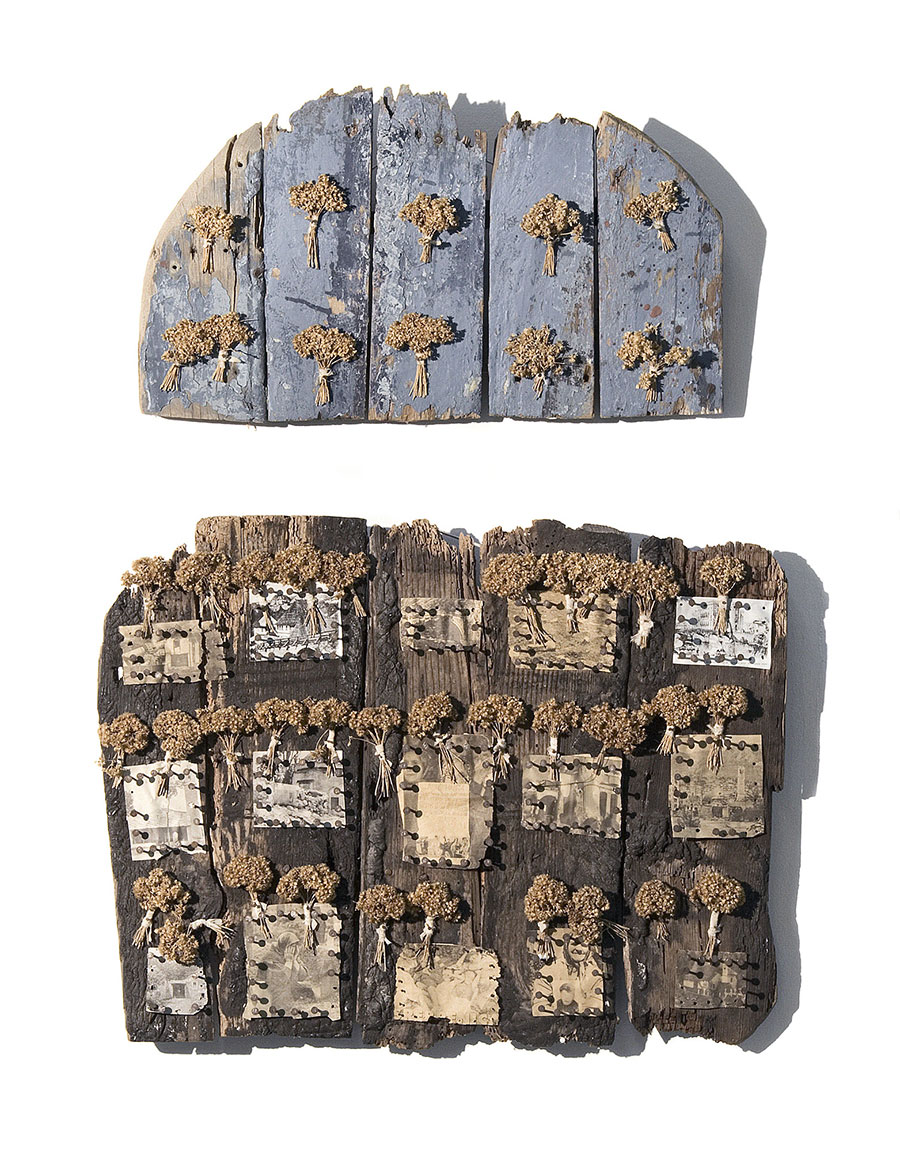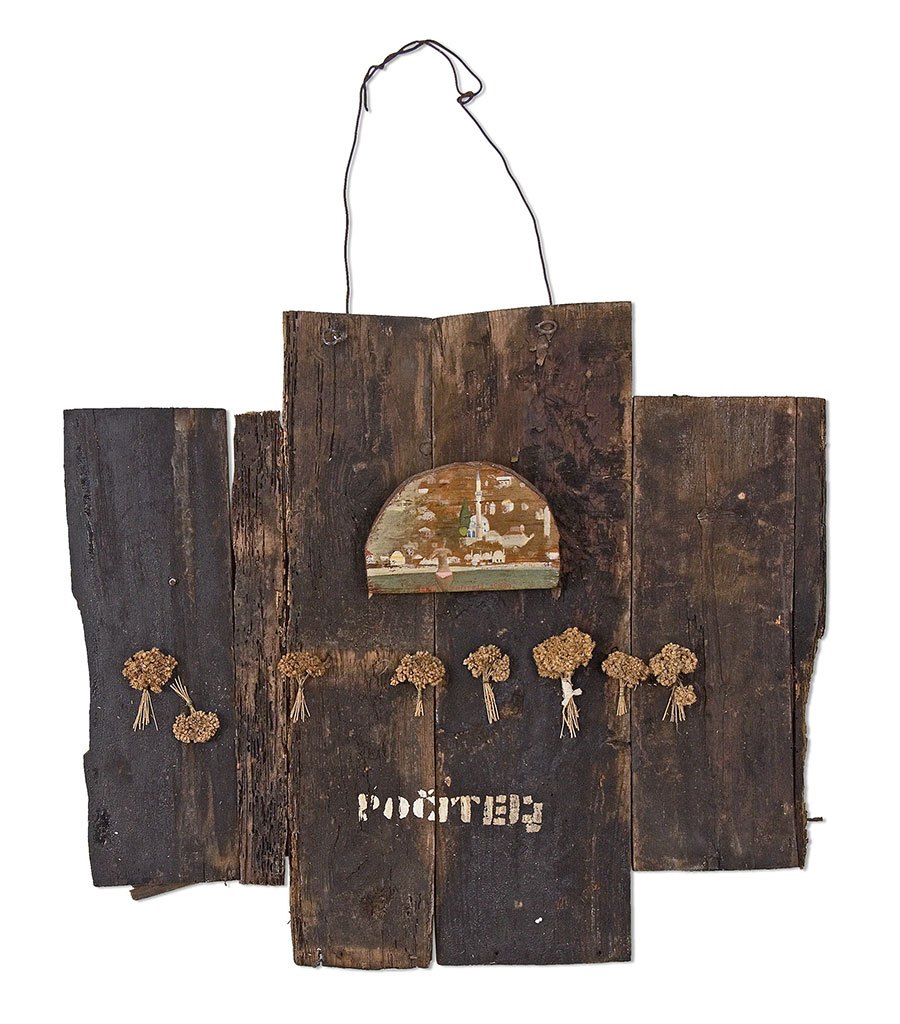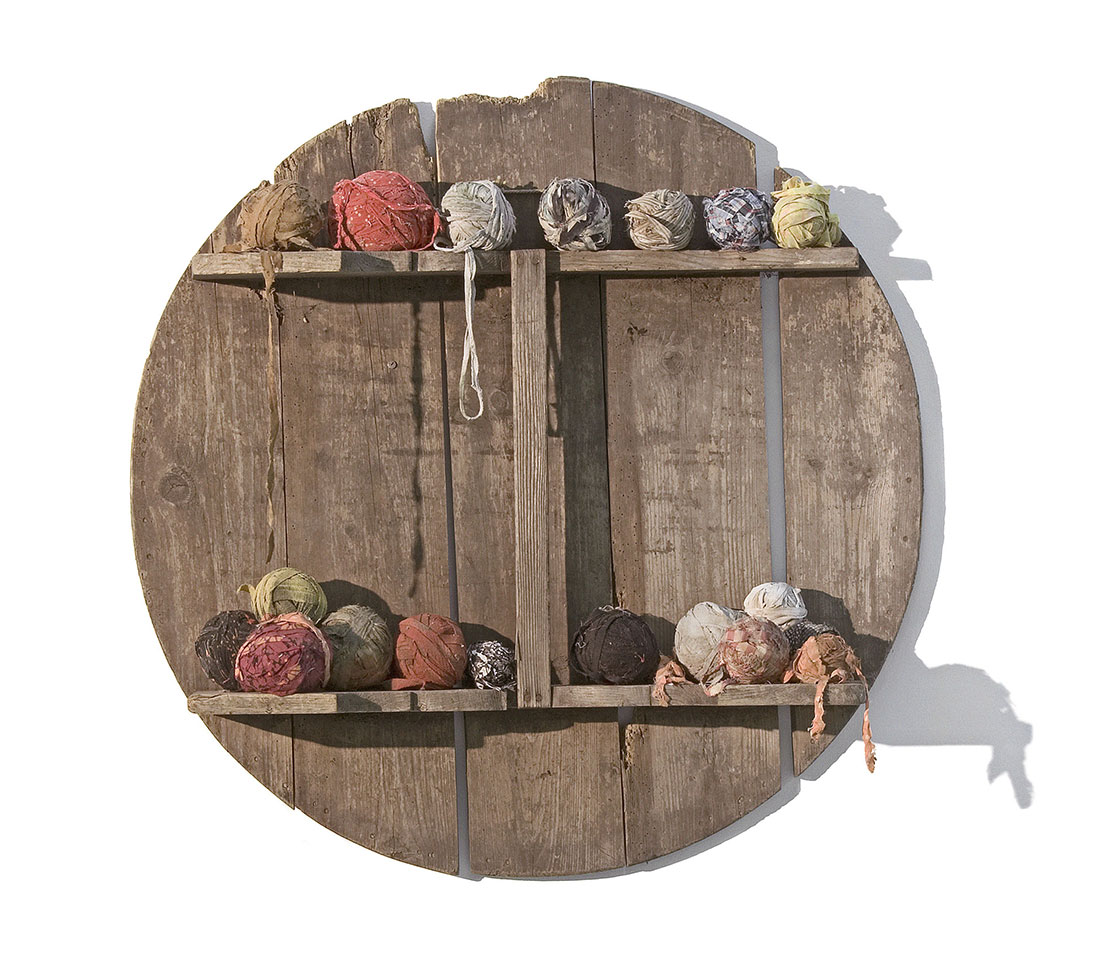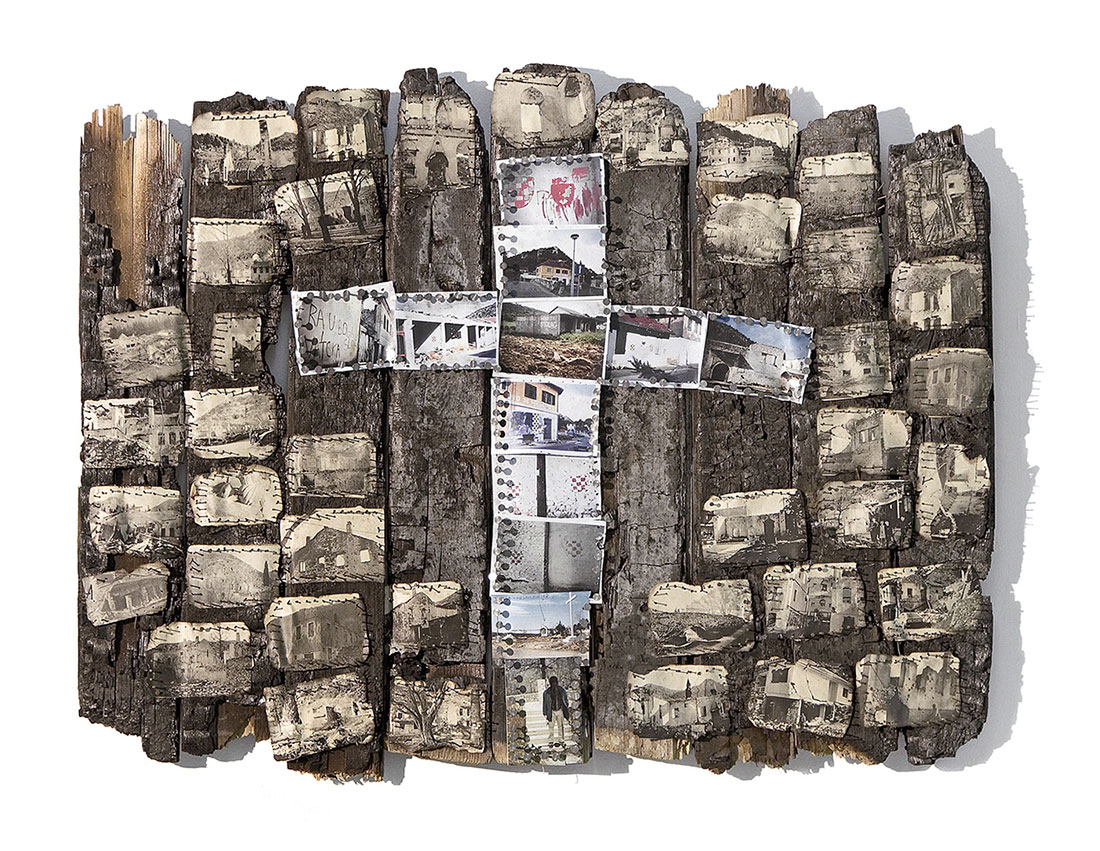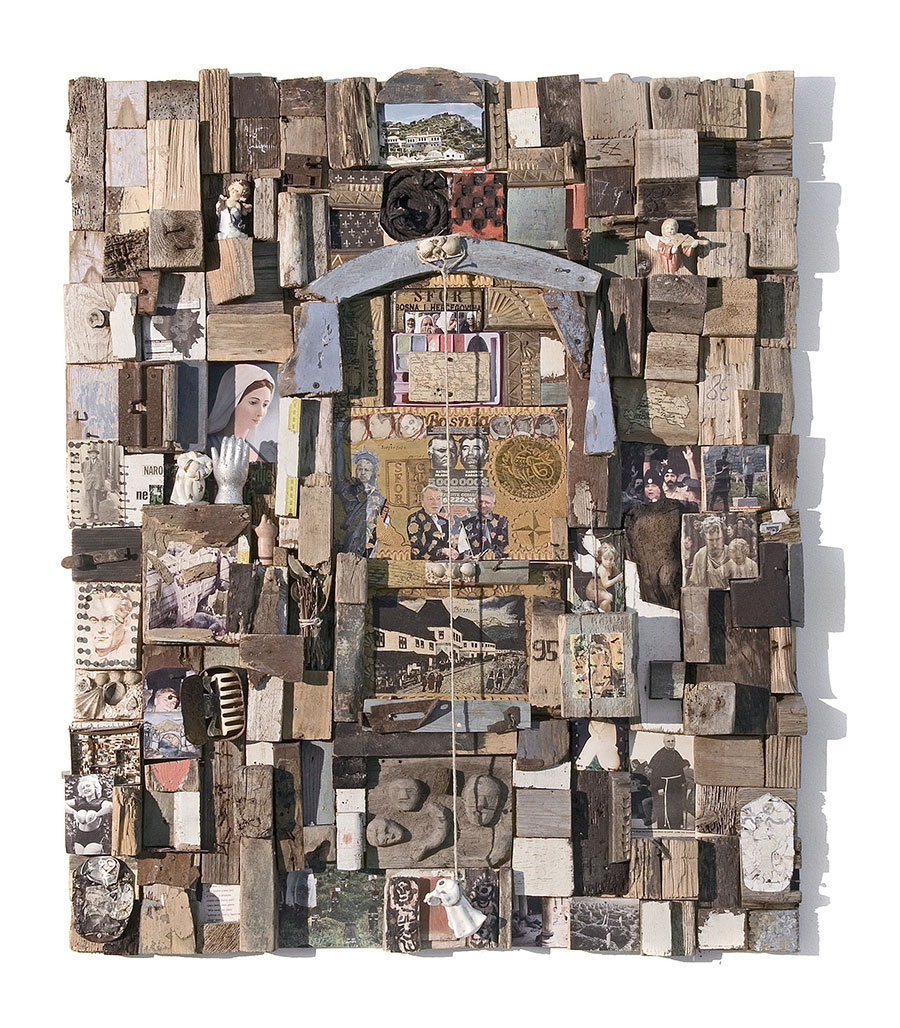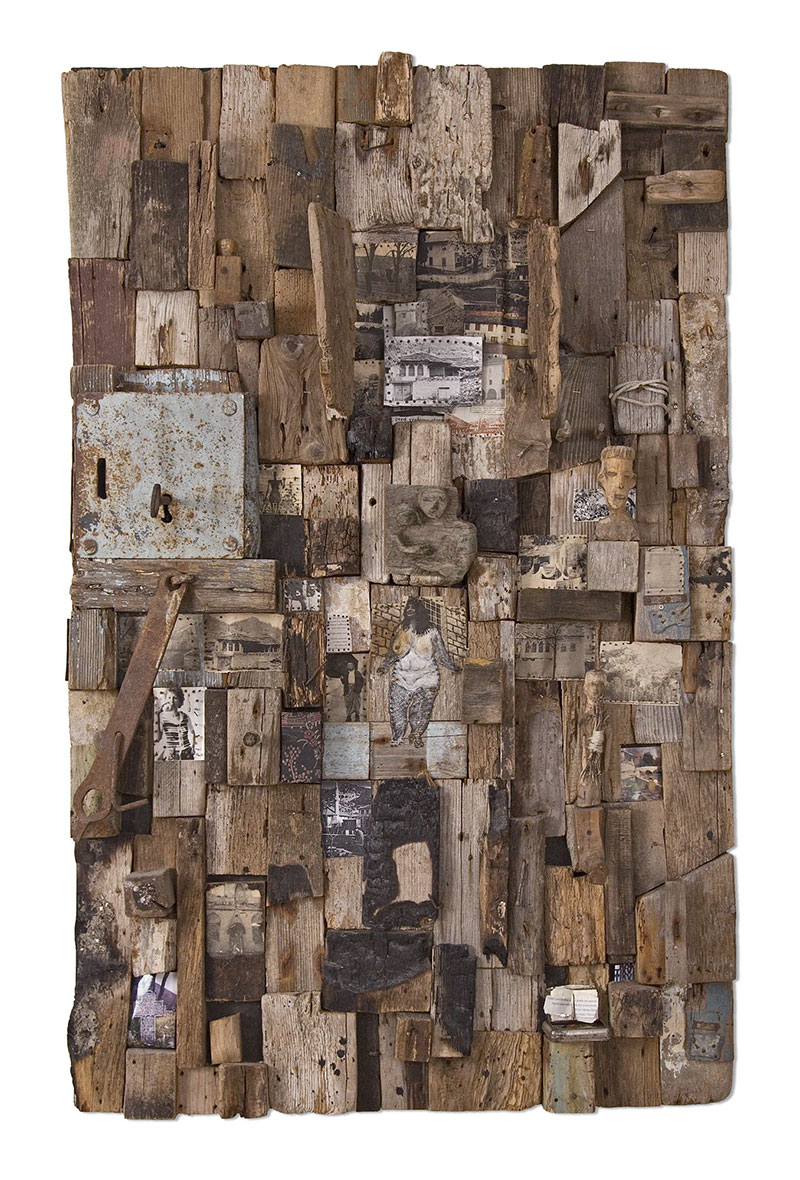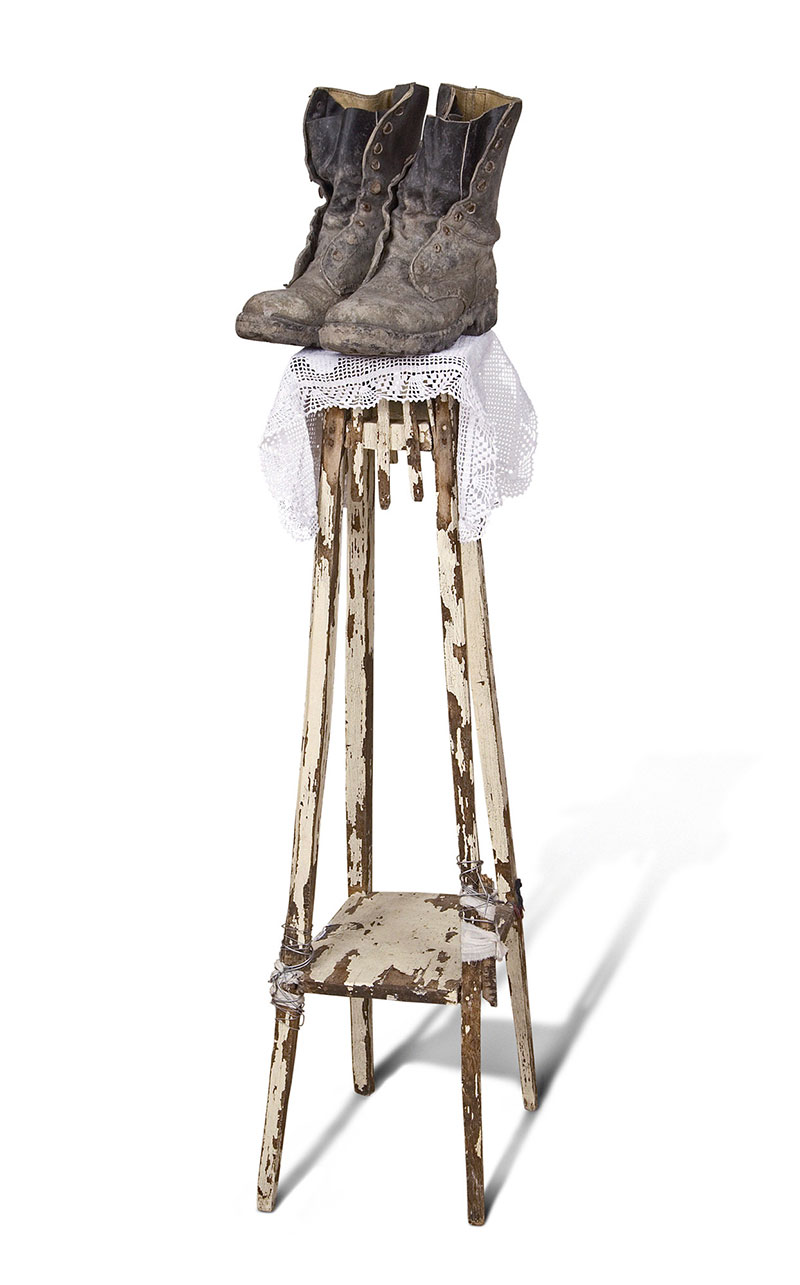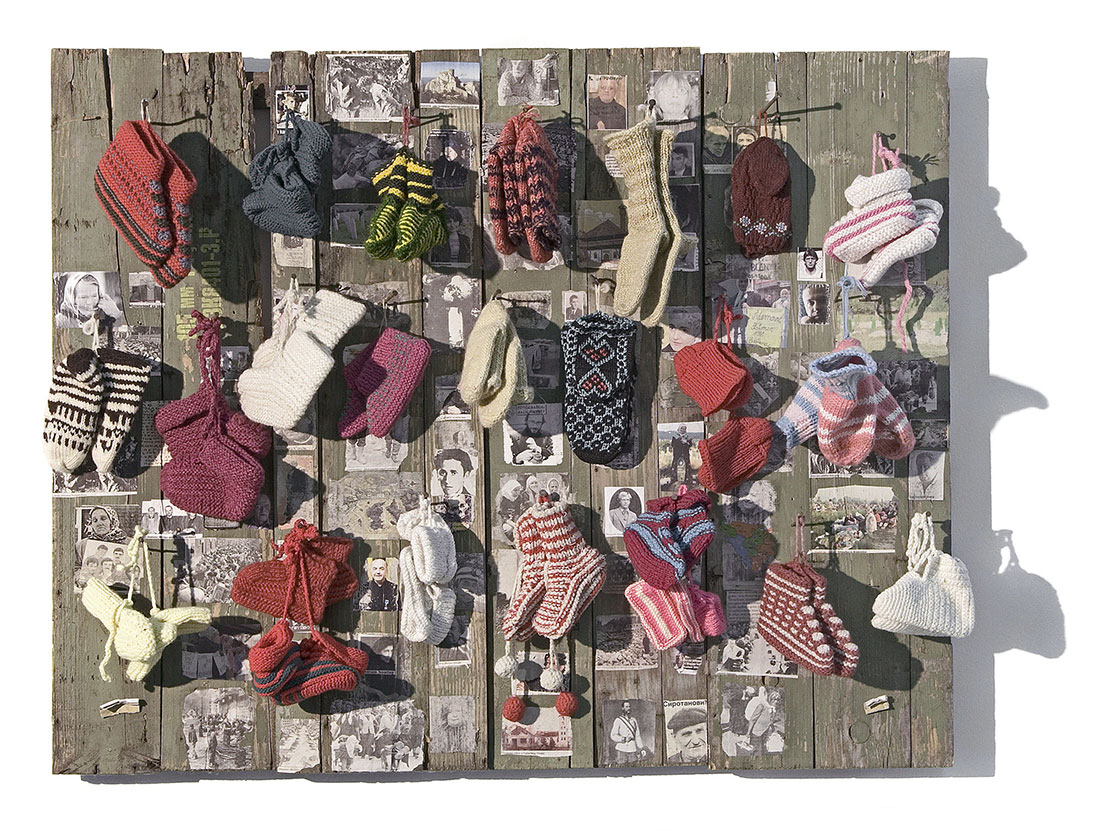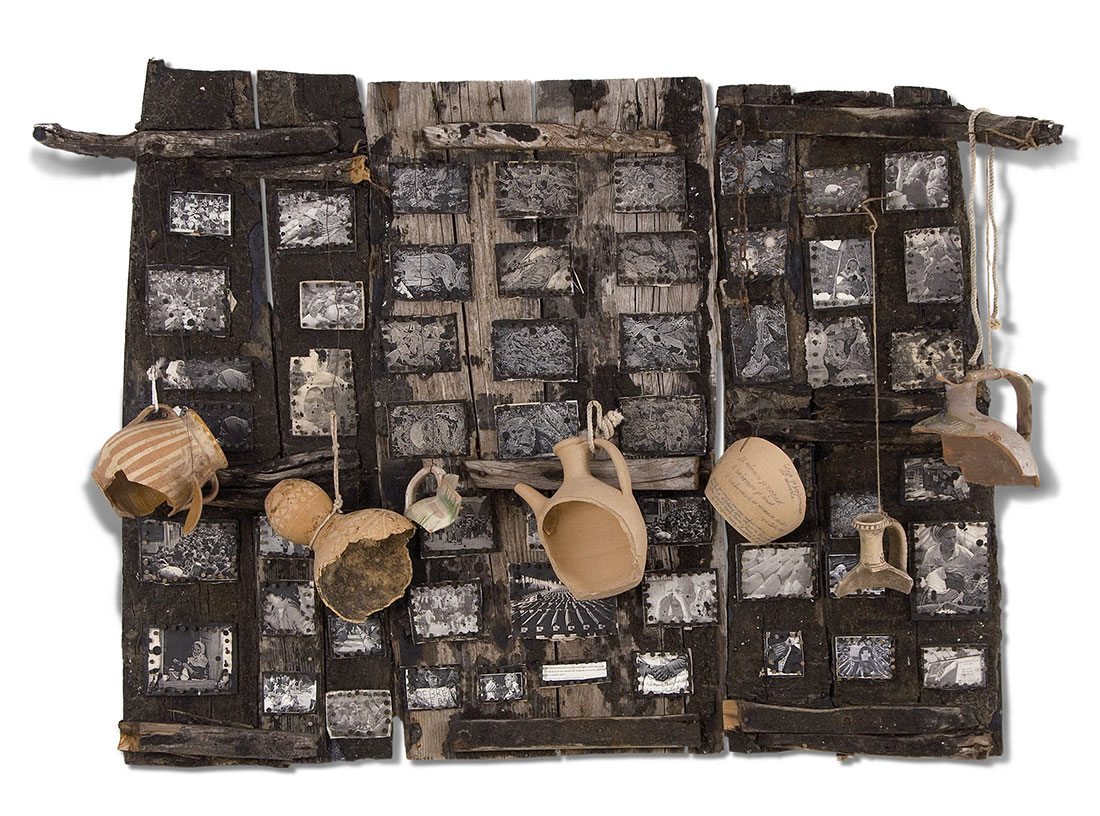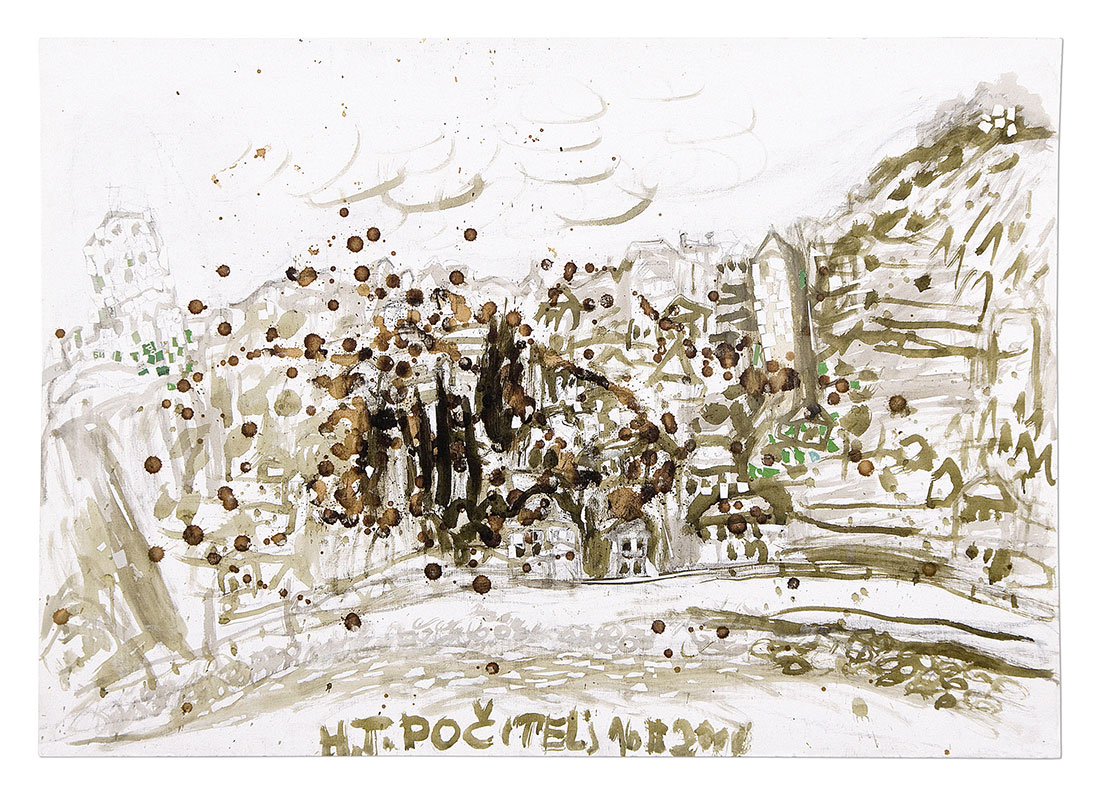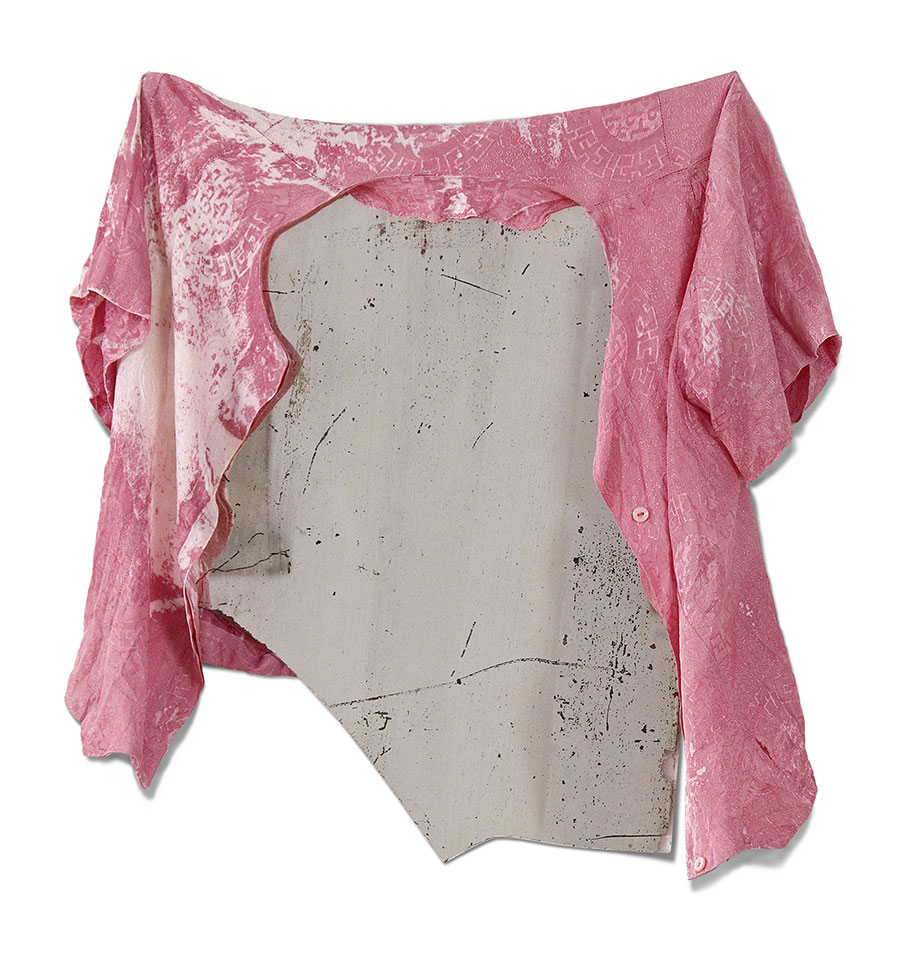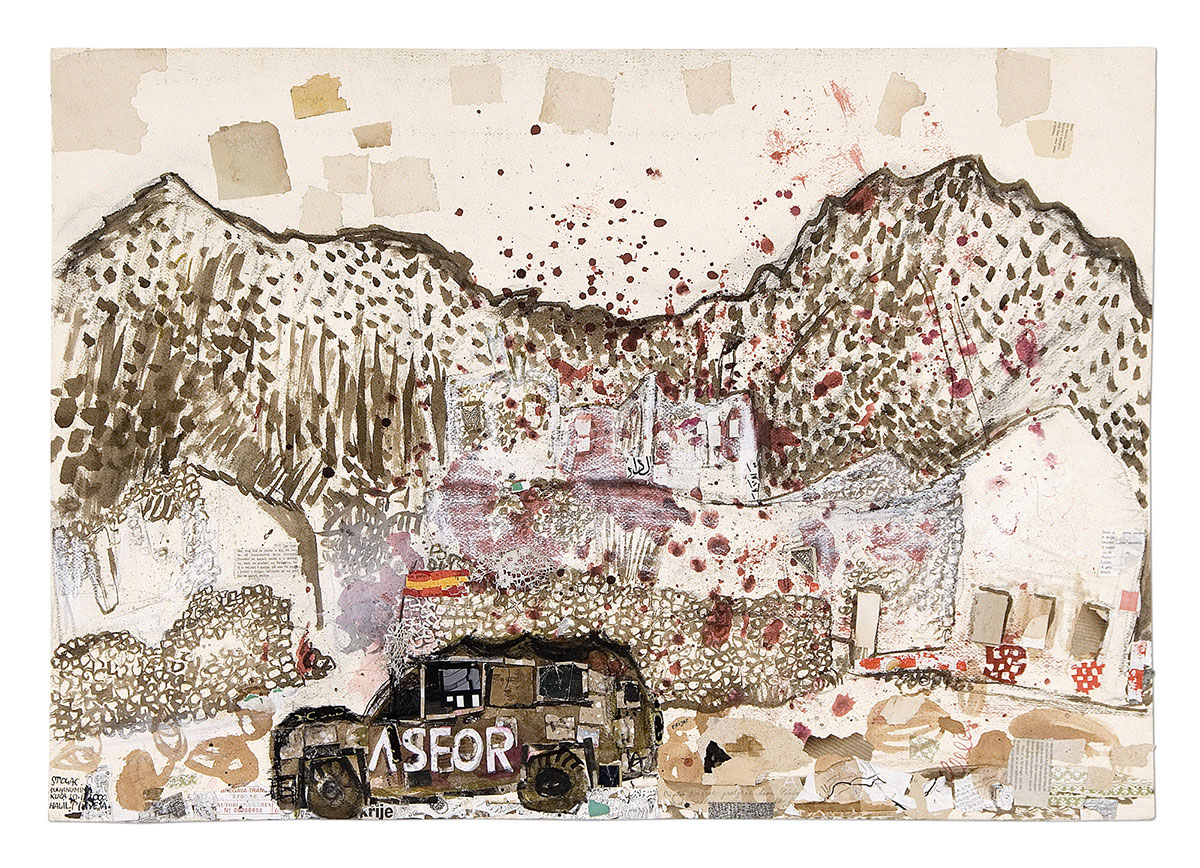The Creative Source of Halil Tikveša
Halil Tikveša is part of a circle of well established, mature artists, self assured in their position, sure of the value of their statements. This is exemplified by the sense of serenity that radiates from him, a peace that has been paid for in loving labour, and won despite a passionate but muffled inner turmoil.
Everything he has done so far is the result of indepth research that, with sustention (by Léger's constructivism, and by Chagall's dreams) and inevitable brushes with the latest discoveries, describes a strange curve of returning to his native climate. His intention is certainly not to draw only on the wealth of Herzegovina, or to confine himself to narrower regional frameworks. He was drawn to Herzegovina, probably, by the purity of the land, the light, the richness of its form at first sight, the play of strange yet so familiar and recognizable inscriptions on the ground. What lives in this young artist and what can live in the landscapes where he wanders and draws from carefully studied data from the occasional drop of pure poetry? The answer would be, it can be found, in the paradoxical change of the relationship of the senses and their stimuli: to have an eye for words and songs, an ear for color, the structure of the ground and spaces, to touch the light, twilights, foggy horizons, to feel special, unusual, to feel being. His thoughts, in what he creates, follow the lower course of the Neretva, lured by the richness of the water and its banks, climb the karst, play with the peaceful dawns and the faint lights of the evening, sink into the torn lap of the earth with the dry meanders of the sinkhole in the poppy field. And in sketch books, he offers us collected wanderings, climbs, games, multiplied by a number that is the sum of his, and perhaps even to himself, insufficiently known experiences.
We remember that even during his studies, he knew how to clearly distinguish what he needed from what the world, literature, and painting offered him from far and near teachers.
The drawings created at that time were never just notes, sketches for later work. Everything was contained in them, everything almost rightfully had to be in them. We were compelled to receive through them the truth that was behind the sign of equality: the rustic interior of the attics, the stingy luxury of simple objects and fruits in the rooms and pantries, the desolate landscape, saturated with the sky, the soil, its ornamentation and outlines, a life that is its own way, knowing it, Tikveša breathed. Today, it seems that the nature of Tikveša's gift is best expressed in a kind of poetic materialization of space. For him, the object is not literally an object or a detail; thrown into space, they float outside the usual supports, merge with it and build it, it itself moves from its real dimensions to the dimensions of a dream, allows us to live with it only as with well-received, accepted music. To put it more clearly, here I am deliberately emphasizing Tikveša's suggestiveness, his sketches almost do not allow one to live in front of them.
One has to enter them, one has to identify with the atmospheres given in them. Whoever understands the depth of the sketches created between 1964 and 1967, especially the Hutovo sheet (1964), the Neretva near Komin sheets (variants from 1966 and 1967), and Ponornica (variants from 1966 and 1967), will understand the necessity of investing in the premises of Tikveša. It is a rare case that a few gray or colored surfaces, extremely reduced, define a landscape so completely that its dimensions escape the eye, which can only be retained in consciousness. It may be a rare case that someone, as a good observer, accepts the reality and unreality of these landscapes and relives some of his privileged moments in them. It is the only way to discover the riddles of the esoteric landscapes to the south and the only way to stay in the elemental purity of summer.
And all of this was created by simple etching and scraping of metal plates, on which it is often difficult to discern where the slight layers of aquatint were lost and where interventions with a knife or needle began.
Torn metal gives refined impressions, it is given to changes that erase the earlier idea and lead to new ones. I said that everything was created by simply etching and scraping the plate, and everything is outside of that, before the technical procedure and behind it, in the very process of creating the work, but not in it.
(Stojan Ćelić, Foreword in the catalog for the exhibition, Sarajevo Art Gallery / Mala galerija, 16.10. – 10.11.1968.)
***
... In the profusion of individual phenomena that have replaced the concept of destruction, in our war and post-war art, with the concept of construction, Tikveša will also have a place on account of the way in which the resources with which he creates his assemblages have arisen. These are not in any way an experiment with structures and items, there is no improvisation or accidental solution here, no neutraly or indifference.
... Thus a new form of Tikveša's opus has arisen from ruins and charred remains, in which form and concept form a complete unity. All the assemblages are articulated with a certain aesthetic festidiousness, which perhaps is more irriting and disturbing psychologically than conductive to contemplation. The diverse formal and structural elements in their composition have been reworked by Tikveša through a mental lens into metaphor and allusion, but reality is not repudiated in the creation of these apparently fictive items, possible only in the imagination of the artist. The „naturalism of material“ is used by many artists, but Tikveša does not remind one of any of them. The nature of the technique itself and the materials differentiate him from others. Different because of the fate of the spiritual space and cultural heritage of his surroundings, different because of the works wchich emit authentic power at all levels of their artistic expression: in visual language, in content and emotional origin.
(Meliha Husedžinović, Foreword in the catalog of Halil Tikveša, drawings, assemblages and objects, Preporod gallery, Sarajevo, 2000)
***
Biography
Halil Tikveša was born in Šurmanci in Herzegovina (Bosnia and Herzegovina). He graduated from the School of Applied Arts in Sarajevo, and the Academy of Fine Arts with postgraduate studies in Belgrade. He had his first solo exhibition in 1964 in Mostar, in the Gallery of the Workers' University (paintings, drawings and graphics), and then in Belgrade, in the Gallery of the Graphic Collective (graphics). Since then, he has been constantly present on the Bosnian, Yugoslav and international art scene. He exhibited in Sarajevo, Ljubljana, Novi Sad, Tuzla,... and in Warsaw, Cracow, Bradford, Lugano, Biella, Geneva, Paris, Munich, Leipzig, Heidelberg, Fredrikstad, Alexandria, Kyoto, Delhi,... . He has won numerous awards for his work. He lives between Sarajevo and Belgrade.
